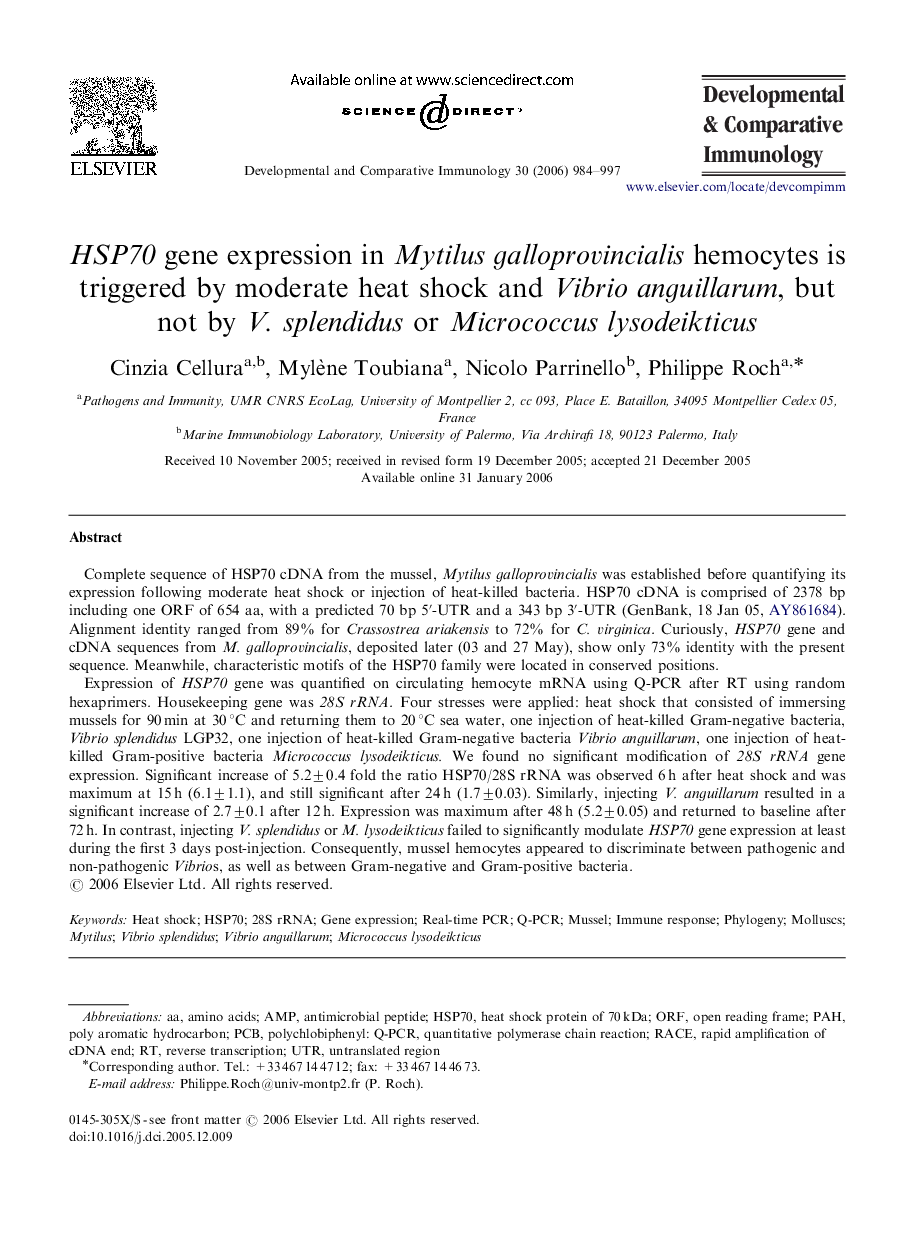| کد مقاله | کد نشریه | سال انتشار | مقاله انگلیسی | نسخه تمام متن |
|---|---|---|---|---|
| 2430417 | 1106566 | 2006 | 14 صفحه PDF | دانلود رایگان |

Complete sequence of HSP70 cDNA from the mussel, Mytilus galloprovincialis was established before quantifying its expression following moderate heat shock or injection of heat-killed bacteria. HSP70 cDNA is comprised of 2378 bp including one ORF of 654 aa, with a predicted 70 bp 5′-UTR and a 343 bp 3′-UTR (GenBank, 18 Jan 05, AY861684). Alignment identity ranged from 89% for Crassostrea ariakensis to 72% for C. virginica. Curiously, HSP70 gene and cDNA sequences from M. galloprovincialis, deposited later (03 and 27 May), show only 73% identity with the present sequence. Meanwhile, characteristic motifs of the HSP70 family were located in conserved positions.Expression of HSP70 gene was quantified on circulating hemocyte mRNA using Q-PCR after RT using random hexaprimers. Housekeeping gene was 28S rRNA. Four stresses were applied: heat shock that consisted of immersing mussels for 90 min at 30 °C and returning them to 20 °C sea water, one injection of heat-killed Gram-negative bacteria, Vibrio splendidus LGP32, one injection of heat-killed Gram-negative bacteria Vibrio anguillarum, one injection of heat-killed Gram-positive bacteria Micrococcus lysodeikticus. We found no significant modification of 28S rRNA gene expression. Significant increase of 5.2±0.4 fold the ratio HSP70/28S rRNA was observed 6 h after heat shock and was maximum at 15 h (6.1±1.1), and still significant after 24 h (1.7±0.03). Similarly, injecting V. anguillarum resulted in a significant increase of 2.7±0.1 after 12 h. Expression was maximum after 48 h (5.2±0.05) and returned to baseline after 72 h. In contrast, injecting V. splendidus or M. lysodeikticus failed to significantly modulate HSP70 gene expression at least during the first 3 days post-injection. Consequently, mussel hemocytes appeared to discriminate between pathogenic and non-pathogenic Vibrios, as well as between Gram-negative and Gram-positive bacteria.
Journal: Developmental & Comparative Immunology - Volume 30, Issue 11, 2006, Pages 984–997